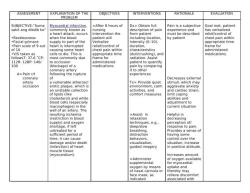What qualifies for medical marijuana?
Qualifying conditions for medical marijuana access vary from one jurisdiction to another, as they are determined by the laws and regulations of the specific region or country. Some regions have relatively broad lists of qualifying conditions, while others are more restrictive. To give you a general idea, here are common qualifying conditions that may allow individuals to access medical marijuana in many places:
Chronic Pain: This is one of the most common qualifying conditions. It typically includes pain that persists for an extended period and is not adequately managed by conventional treatments.
Cancer: Many jurisdictions allow cancer patients to access medical marijuana to alleviate symptoms such as pain, nausea, and loss of appetite associated with cancer and its treatments.
Glaucoma: Glaucoma is an eye condition characterized by increased intraocular pressure. Some states permit medical marijuana for glaucoma patients to help lower eye pressure.
Epilepsy and Seizure Disorders: Medical marijuana can be an option for individuals with epilepsy or other seizure disorders who do not respond well to traditional medications.
Multiple Sclerosis (MS): MS is an autoimmune disease that can cause muscle spasms, pain, and mobility issues. Medical marijuana may help manage these symptoms.
HIV/AIDS: Individuals living with HIV/AIDS often experience symptoms like nausea, pain, and loss of appetite, which medical marijuana can help alleviate.
Crohn's Disease and Inflammatory Bowel Diseases: Medical marijuana may be used to manage symptoms such as abdominal pain, diarrhea, and inflammation in patients with these conditions.
Amyotrophic Lateral Sclerosis (ALS): ALS, also known as Lou Gehrig's disease, can cause muscle stiffness and spasms, and some patients use medical marijuana for symptom relief.
Post-Traumatic Stress Disorder (PTSD): In some regions, medical marijuana is available to individuals with PTSD who have not responded well to traditional treatments.
Alzheimer's Disease: While not universally accepted as a qualifying condition, some places permit the use of medical marijuana to manage symptoms of Alzheimer's disease, such as agitation and anxiety.
Terminal Illness: Some jurisdictions allow individuals with terminal illnesses or a prognosis of a limited life expectancy to access medical marijuana for pain relief and improving their quality of life.
Intractable Epilepsy: This is a specific form of epilepsy that does not respond to conventional treatments and is often cited as a qualifying condition.
Neuropathic Pain: Conditions that cause neuropathic pain, such as diabetic neuropathy or post-herpetic neuralgia, may qualify individuals for medical marijuana in some areas.
Rheumatoid Arthritis: Some regions include rheumatoid arthritis on their lists of qualifying conditions due to the potential for medical marijuana to reduce pain and inflammation.
Spinal Cord Injury: Patients with spinal cord injuries may use medical marijuana to manage pain, muscle spasms, and other related symptoms.
It's important to emphasize that the specific list of qualifying conditions can vary widely depending on where you live. Additionally, regulations and eligibility criteria may change over time, so it's crucial to consult your local medical marijuana program or regulatory authority for the most up-to-date information on qualifying conditions and the application process in your area.












